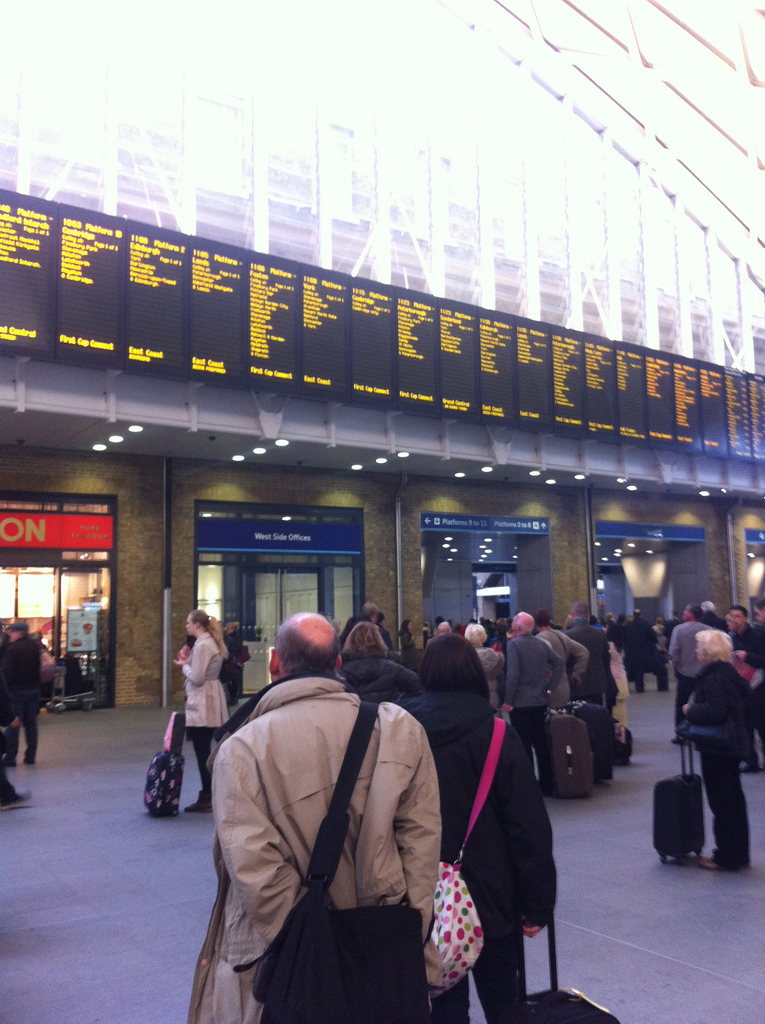Sound and Train Stations: Space and Context
I recorded a few more Audioboo posts on my recent travels to Manchester and Cambridge, respectively. I am kicking myself for not recording the train stations of Cambridge and Manchester Piccadilly themselves as the sounds there were completely different than in the beautiful behemoths of Euston and Kings Cross. I am convinced each of these places has their own register, their own aural signature that informs the context and the understanding of that place. I love investigations into this type of space, how our non-visual senses inform the context and the layering of meaning that space provides. There are few finer examples of this type of exploration than the London Sound Survey, which might have been my motivation for trying something myself with Audioboo in Korea, the US, and now the UK.
Euston Station, London
Kings Cross Station, London
Multimodality and the Flow of Sound
I am further convinced that multimodal constructions, an intentional intersection of audio, text, visual, kinesthetic activity, are the most authentic productions of creativity and comprehension that learners can generate. They can and should be viewed not only as equal in stature to purely textual constructions, but as transversing a much broader scope of meaning. I am referring yet again to multimodality so I won’t bore you with further detail. I will say that constructing knowledge constructs (and when I say knowledge constructs, I basically mean an output, like an assessable submittable ‘essay’) represents a fairly agile sense of mode, a robust sense of how each of these modes has significant strengths and weaknesses for presenting a particular meaning, and a creativity inspired by generating ‘something’. In short, we can and should begin to see learners as artists, assimilating and creating at every stage of the process with each and every mode at their disposal. And sound is a huge part of that. How does sound flow through an activity system like the one below (sorry, I just like this image)? How does it mediate activity and how is it mediated by learners? How does it inform the space? Imagine knowledge constructions with audio, video, image, text, and kinesthetic elements (flow) constructed routinely by learners in formalized modes of instruction. I can. I also think it should happen in mobile technology.



Really enjoyed this piece… makes me wonder whether all train stations smell differently too…
Thanks for the comment. I am interested in all multimodal/multisensory projects like the one your site seems to be outlining. I am curious to learn more about your project and to see if we can collaborate on anything, short of John Waters’ Smell-O-Vision (http://en.wikipedia.org/wiki/Smell-O-Vision). There is no doubt that particular locations have particular smells, some subdued while others are just overwhelming. I still smell the propane/burning tire scent of certain cities in Africa, the original crisp funk of Seoul, etc. The olfactory is such a powerful force. Great project!
Thanks Michael! Would be glad to chat. I too am keen to try and bring together work on different senses, I am particularly interested in exploring how different senses work together and it appears that sound and smell have a ‘special relationship’, see http://www.guardian.co.uk/science/2012/oct/22/sound-and-smell-create-harmony
Perhaps we could plan a skype conversation at some point?